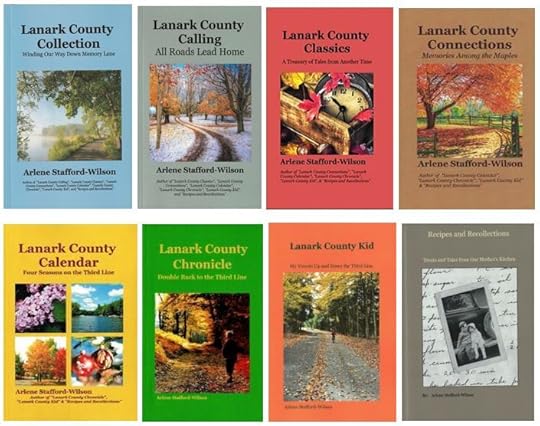Arlene Stafford-Wilson's Blog, page 34
March 13, 2022
Time to Spring Forward
The tail-end of winter dragged on like my math class at Glen Tay School, and I’d seen quite enough snow for one season. I kicked at the chunks of ice, as I trudged down the lane-way, to wait for the bus on the Third Line. I stood there cold and shivering those dark mornings, in early March. I could still taste the remnants of the bitter cod liver oil that Mother insisted we take every morning in the winter. I couldn’t even remember what it was supposed to do for us. It sure didn’t make me feel any warmer. I stared up the Third Line toward DeWitt’s Corners, and strained my eyes to see if the bus was coming. It wasn’t.
My teacher, Mrs. Conboy, told us that if March “came in like a lion” that it would “go out like a lamb”. I wasn’t really sure what she meant by that, but if she was talking about the weather, March, that year, had come in more like a ferocious white dragon, and had dumped another foot of snow on our yard. Just what we needed; more snow for my brother Roger and I to shovel after school.

Despite the fact that we’d tapped the trees, and had a nice jar of maple syrup sitting on the kitchen table, it really didn’t feel any warmer. I kept staring down at Mother’s flower bed still heaped with snow, wondering if those perennials would ever come up again. The only flowers I’d seen since last fall were the glossy photos in Mother’s tattered copy of McConnell’s Seed Catalogue. Lately, she’d been sitting at the old kitchen table in the evenings, staring at the pages of that seed catalogue as though it contained the secrets of the universe. Maybe she was dreaming about her flower beds; planning which seeds she’d plant, if those mountains of snow ever melted.

One of the things making me grow weary, and impatient for spring, was wearing boots. Put them on; take them off…on and off, off and on, month after snowy month. I’d been stomping around in boots since last November. It seemed like I was always weighed down with hats, and mittens and scarves and sweaters. No wonder some of the animals slept through the winter. It didn’t seem like such a bad idea on days like this. Maybe next fall I’d fill up a great big sack with Mother’s chocolate chip cookies, eat them until I passed out, and wake up again in the spring. If the black bears that lived in the bush near the train tracks could do it; why couldn’t I?

The weeks passed by and one night, after supper was finished, we were attempting to watch the news, on the old black and white television in the living room. Dad was standing over the set, moving the ‘rabbit-ear’ antennae back and forth, trying to get a clearer picture. Great, I thought to myself, there’s even ‘snow’ on the TV. Dad continued to fiddle around with the knobs at the back, and kept adjusting the antennae until he finally got a reasonable looking picture on the television. After Dad turned up the sound I heard the most beautiful words I’d heard for a long time. The man reading the news announced that Daylight Savings Time would be starting this Sunday morning.


Dad remarked from the comfort of his lazy-boy chair, that it was none other than Ben Franklin, who invented daylight savings time. At that point, I didn’t care who had invented it; I was just happy to hear that it was beginning soon. Mother said she’d have to remember to turn her alarm clock back on Saturday night before bed, so we wouldn’t be arriving late at Calvin Church on Sunday morning. Mother also said that it was going to be difficult getting up for school the first few days next week, because I’d really be getting up an hour early. I was so happy to hear the news that I would have gladly gotten up three or four hours early, just to have that extra hour of daylight after school.
I’ll never understand why some of those Lanark County winters seemed to drag on forever. Frigid days of boots and snow, and cod-liver oil, and days too cold to play outside, went on and on. Of all the seasons in the year why did the worst one last the longest? It reminded me of the way that we had to finish all of the vegetables on our plate before we’d get any dessert. Every scrap of broccoli, every mound of mashed turnip, every morsel of creamed corn had to be consumed before we’d get a slice of Mother’s moist, delicious chocolate cake.


So, maybe winter was the ‘vegetable’ part of the meal. Something we had to work our way through, before we got to the good stuff. It was something often mushy, just like the snow; sometimes bitter, like the cod-liver oil. Sometimes it was cold, like the broccoli that often sat on my plate until the end, when I couldn’t avoid it any longer. Spring was like the reward for suffering through the long winter; just like eating the chocolate cake after enduring those awful vegetables. I wondered to myself if spring would seem as sweet if we didn’t have to tolerate the long harsh winter first. After all, I knew for sure that after consuming a plateful of tasteless green mush, nothing could compare to the heavenly chocolate flavour, and sweet rich icing, on our Mother’s cake, still warm from the oven.
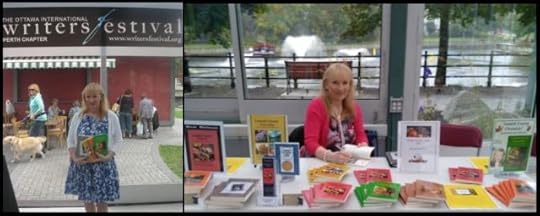
Arlene Stafford-Wilson
March 8, 2022
The Legend Behind the Recipes
The bright-eyed twenty-something grabbed her hat, and headed straight for the recruiting station, after hearing that her only brother was rejected from the military because of his poor eyesight. “Someone has to represent our family in the war efforts!” her voice fading as she ran down the sidewalk, vanishing out of sight.
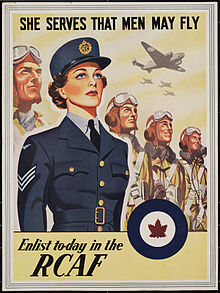

The No. 8 Bombing and Gunnery School in Lethbridge, Alberta, would become Audry’s new home, where she would meet the dashing young Lanark County farm boy Tib Stafford.

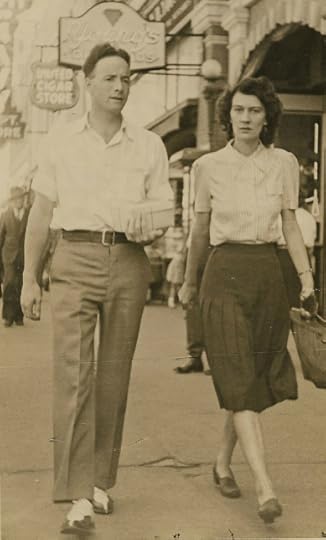
After a whirlwind of dating, he asked for her hand, and they married on July 12, 1943.


Audry took great pride in her military contributions, and was honoured to be in the very first graduating class of Physical Education Instructors, for the RCAF Womens’ Division.
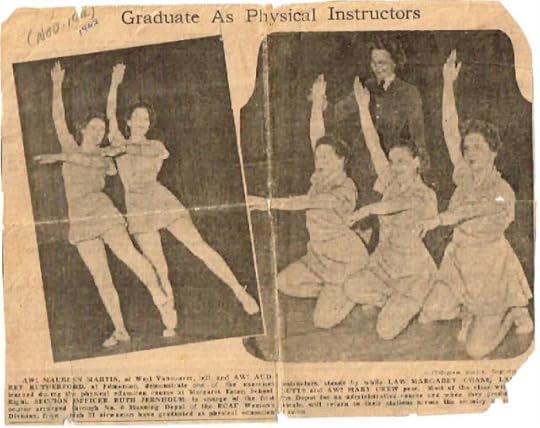
In the months that followed, she began to feel a bit queasy, and discovered that they were going to have a baby. The rule in those days was to discharge female soldiers who were expecting, and sadly, she gave up her position as Corporal, and returned home.
On a warm spring day, in May of 1944, she gave birth to a strapping baby boy, Timothy Stafford.
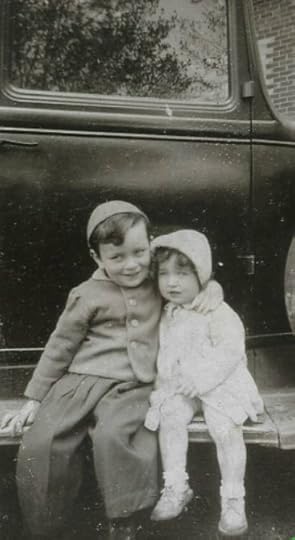
When the war ended, they settled on a farm, on the Third Line of Bathurst Township, Lanark County, just west of Perth, Ontario, and the family continued to grow. Now there was big brother Tim, and his two little sisters Judy, and Jackie.
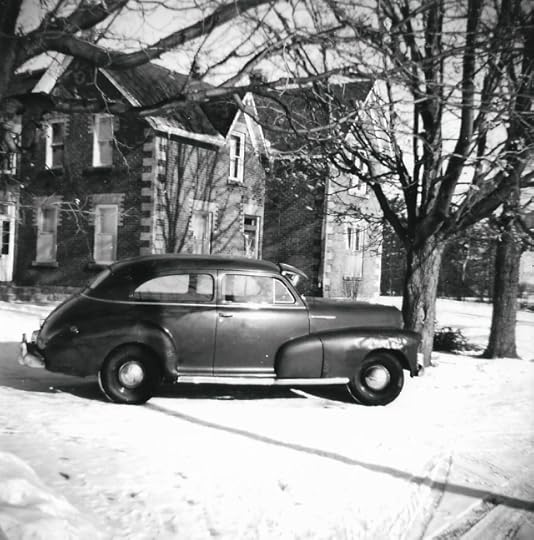
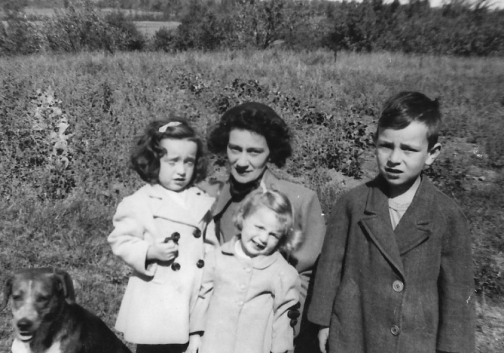
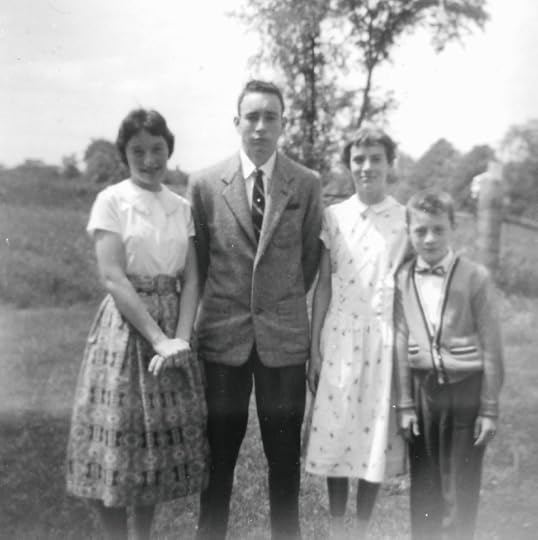
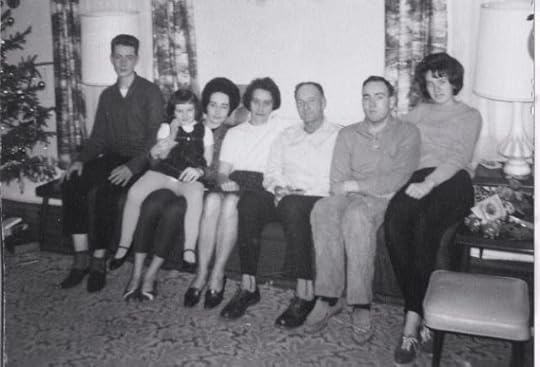
Always busy in the kitchen, an excellent baker, Audry began to enter the home-craft competitions in Perth Fair. Her baking was a big hit, and she won blue ribbons, red ribbons, silver cups, silver trays, and filled her china cabinet with the spoils from her winnings. She won so many prizes over the years that her reputation for award-winning baking was the talk of Lanark County, and the Agricultural Society asked her to be a Fair Judge.



For decades, Audry was a Fair Judge, throughout the County of Lanark – at the Perth Fair, the Maberly Fair, the Lombardy Fair, even more distant fairs in Madoc and Tweed. She became a well-known Fair Judge throughout Eastern Ontario.
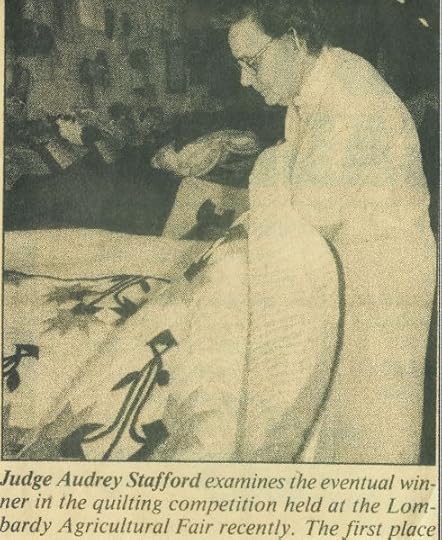
Audry lived a long life, and when she passed away, her children assembled all of her prize-winning recipes, and included stories of growing up on the little farm, on the Third Line of Bathurst. The book was called “Recipes and Recollections: Treats and Tales from Our Mother’s Kitchen”
(Audry’s first-born Tim, and second-born Judy, are featured on the cover)

This popular book has become the ‘go-to’ guide for anyone who loves the traditional, the classic, the old-time, farm-style recipes. No less than 93 prize-winning recipes are featured in the book, and it has become a best-seller, ideal for anyone considering competing in the baking categories at the local fairs who’s looking for an ‘edge’.

“Recipes and Recollections” will warm your heart, and fill your stomach, with homemade comfort foods guaranteed to please the crowd!
Available at The Book Nook, Spark Books & Curios & Mill St. Books in Almonte, or online at http://www.staffordwilson.com

Arlene Stafford-Wilson
March 4, 2022
Farmer of the Week 1962-64

‘Farmer of the Week’ was a column that appeared in “The Perth Courier”, and ran from August 1962 until August 1964. The farmers featured in these articles were chosen because they were noteworthy. Some were prominent because of the sheer size of their operations, some were unique because of the type of farming they did, and some specialized in a style or method of farming that was deemed newsworthy at that time. No matter the reason that each of these local farmers was singled out, they were all important to our community. Many were members of community organizations, active in their churches, and some were even politicians. The most important thing they all had in common, and a source of pride for all, was that they were farmers…..
This is a tribute to our Lanark County farmers. Not all were featured in the local papers, but all contributed to their families, and their communities. We are grateful for those who labour in the soil, in all weather conditions, to put wholesome food on our nation’s tables. Thank-you!
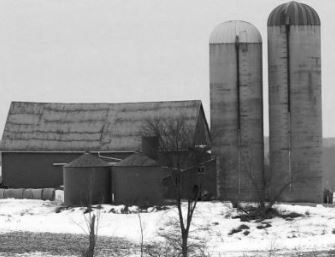


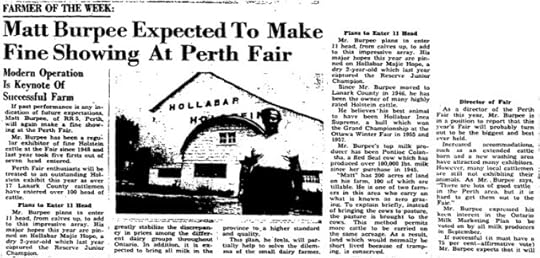
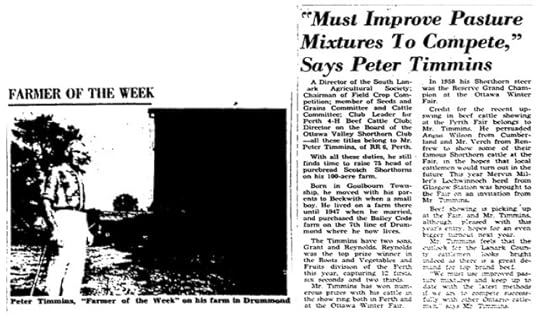
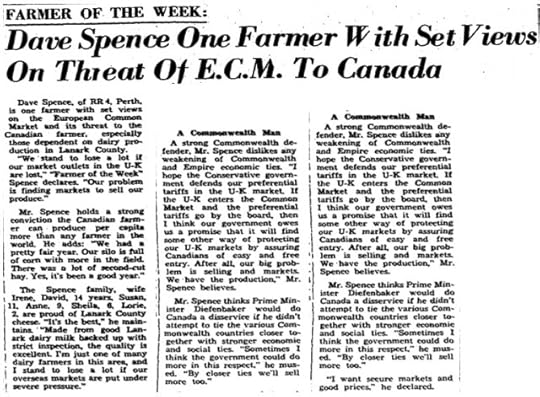

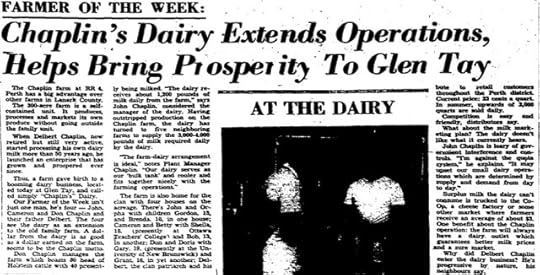
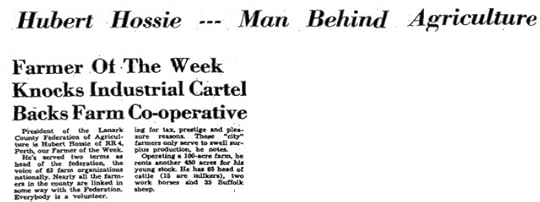

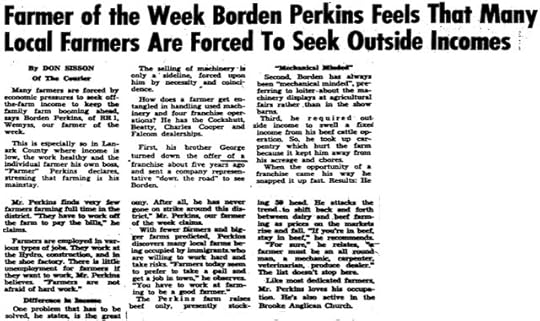
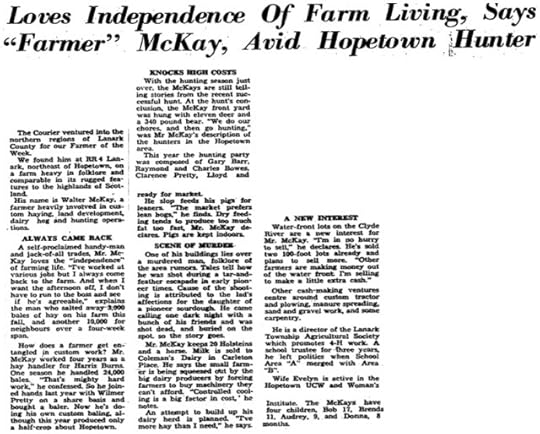
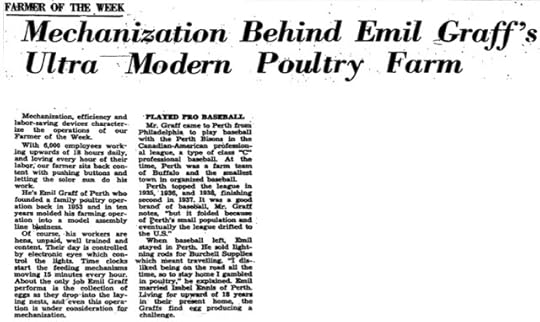
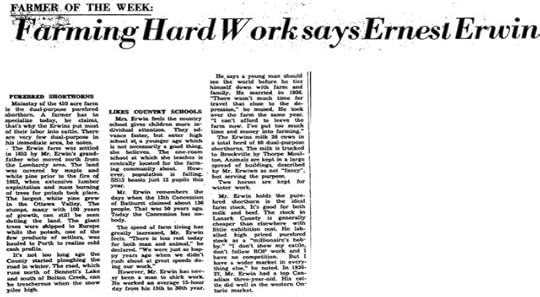
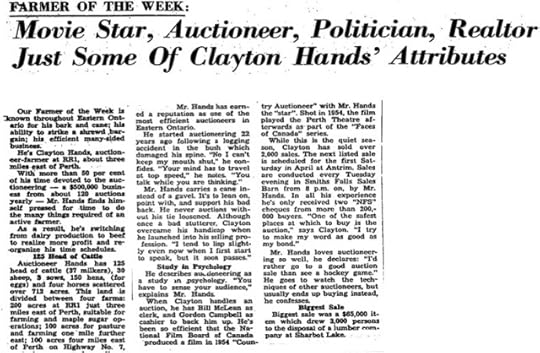
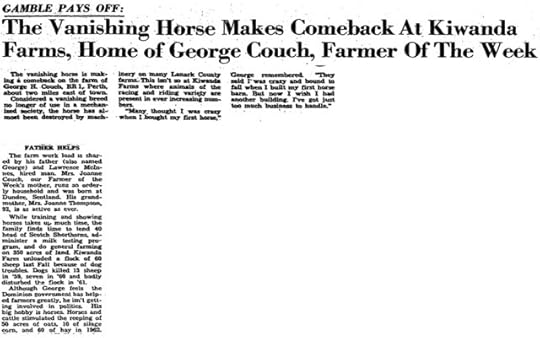
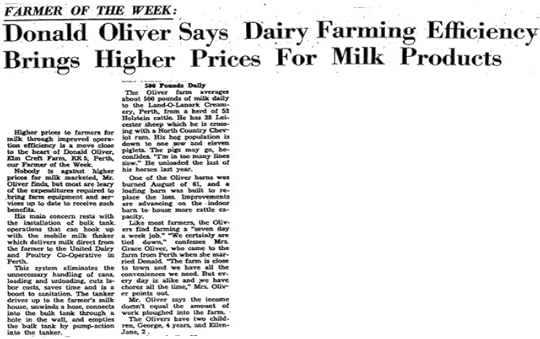
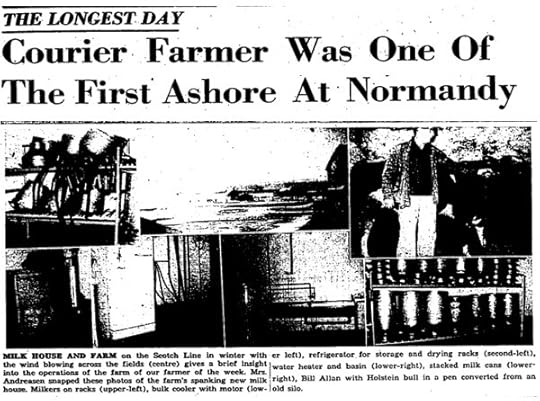

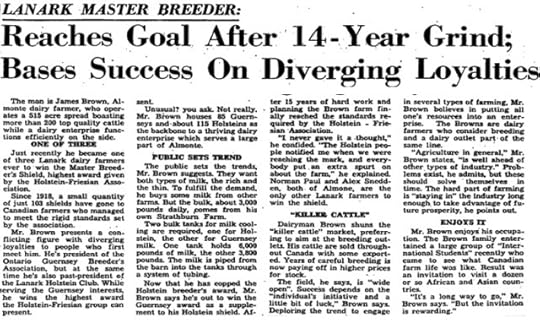
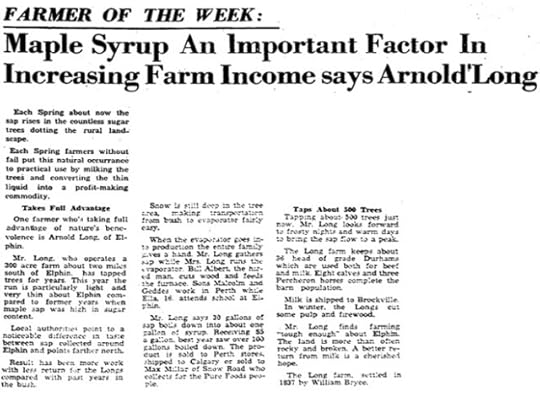
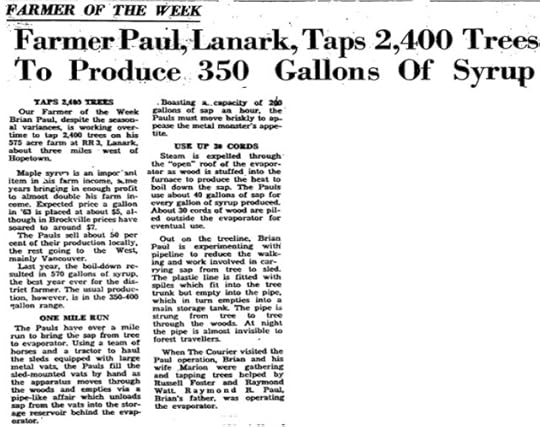
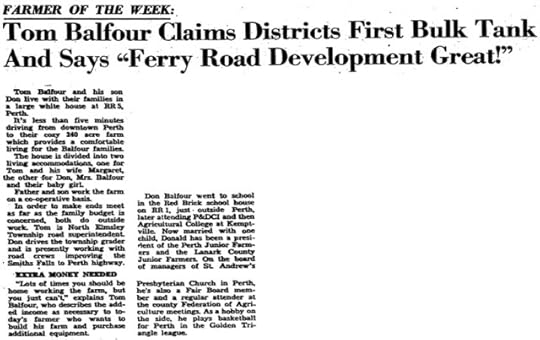

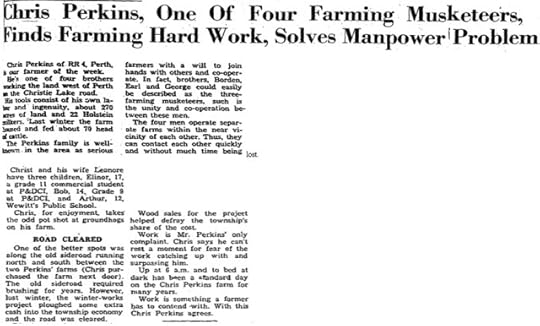
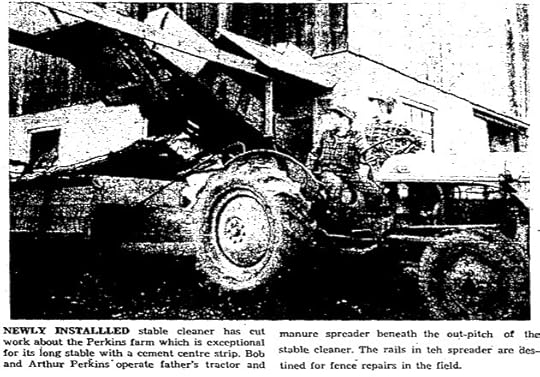

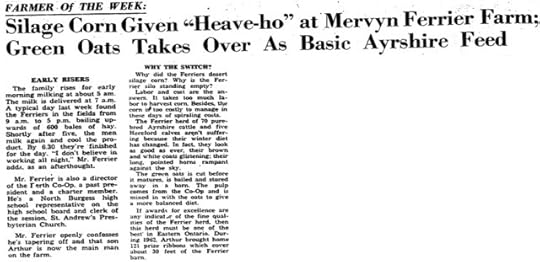
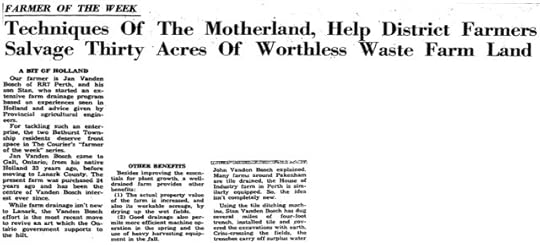


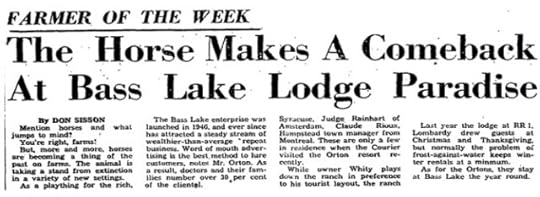

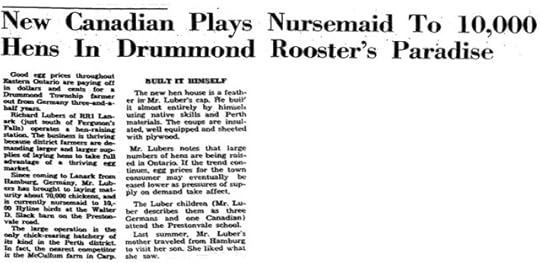
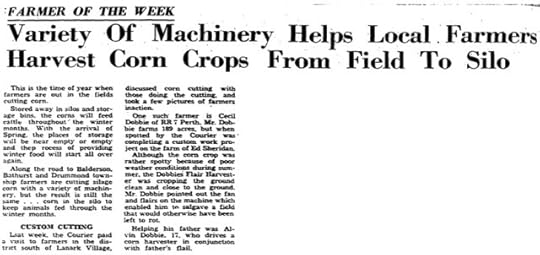
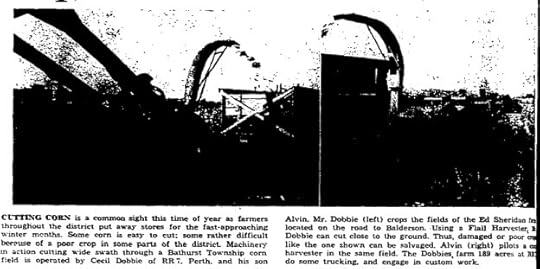
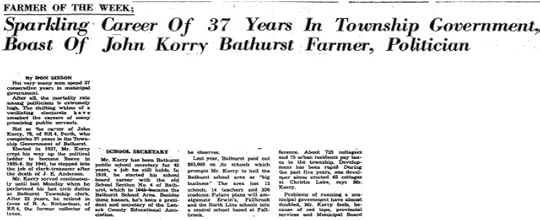
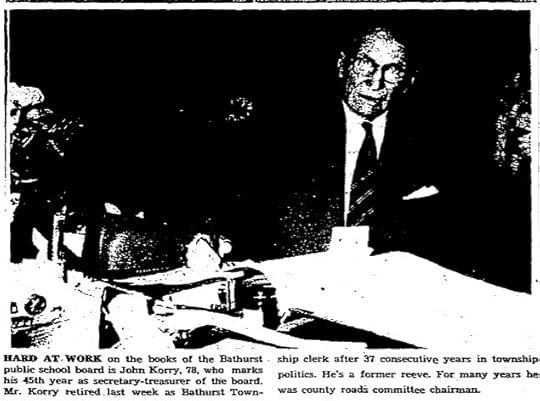
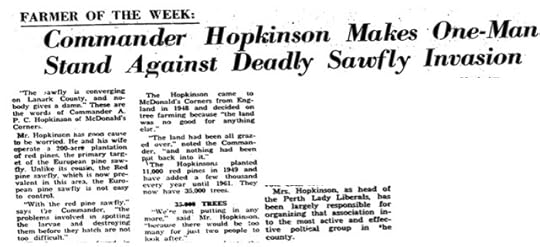

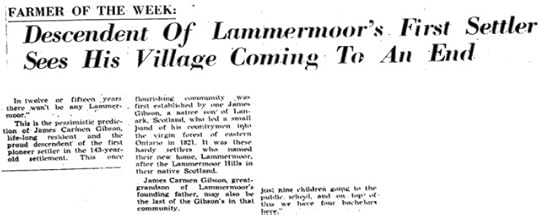
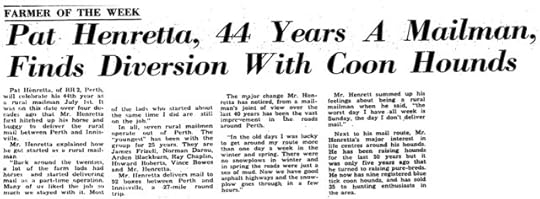

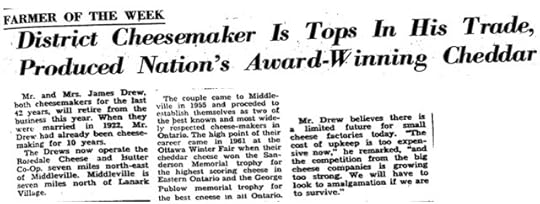

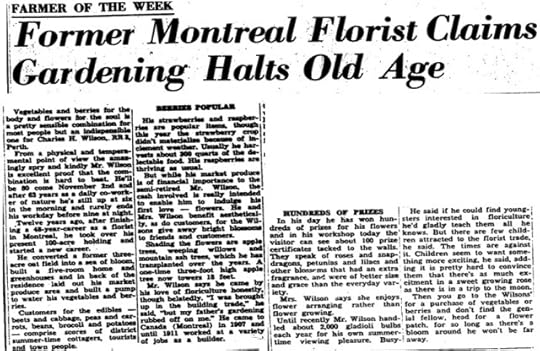
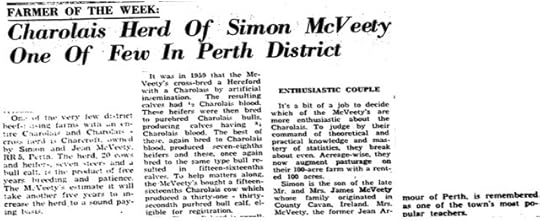

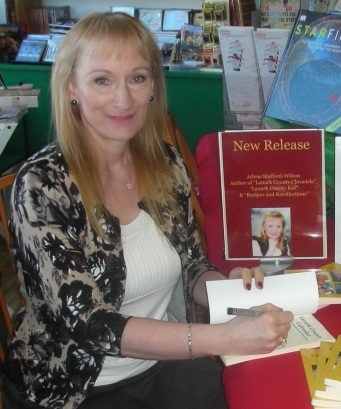
Arlene Stafford-Wilson
March 1, 2022
Lent: 40 Days without Ice Cream
I can’t blame the local clergy in Bathurst Township, but I spent most of my childhood believing it was the church telling people it was wrong to eat ice cream before Easter. By the time I was in grade 7 or 8, at Glen Tay Public School, I figured out for myself that it was Mother’s choice to ban ice cream from our old chest freezer, during the 40 days of Lent.

Lent began with Ash Wednesday each year, and was a time for moderation, reflection and spiritual discipline, in the weeks leading up to Easter. It doesn’t have anything to do with ice cream; at least not at anyone else’s house……….but it did at ours.
Mother loved ice cream; particularly vanilla ice cream. Although she was just an average-sized person, she had no trouble at all polishing off an entire gallon by herself, after the supper dishes were done. She’d grab a tablespoon, and the carton of vanilla, and head for the couch in the living room. When I think back now, it wasn’t even particularly good ice cream; at least not compared to what we can get today. She would buy the cheapest ice cream she could find, which was usually the ‘Top Value’ brand from the IGA store, on Wilson Street in Perth.

Once she’d opened the carton and dug that tablespoon in, we all knew that the ice cream’s days were numbered. She wouldn’t always finish the whole thing at one sitting, but she’d have a good go at it for sure. Sometimes she’d complain later that evening that her stomach was troubling her, or that she had indigestion. She’d look over at Dad sitting contentedly in his lazy-boy chair, and ask him if she could have one of his Tums that he always carried in his pocket. She’d go on to say that she didn’t know why her stomach felt at bit ‘off’, despite the fact that the carton would be empty, and laying defeated in the garbage can, in the back porch. Dad was always too polite to say what was obvious to the rest of us.
Mother often told us about growing up in the 1920s in Edmonton, and how each night her mother sent her to the corner store, to buy a vanilla ice cream cone. She carried it home gingerly, catching drips on her tongue, before handing the prize over to her mother. Maybe this is where her love of ice cream began, although that still does not explain how she managed to consume it in such huge quantities.

So, as Lent rolled around each year, very early in the spring, Mother would announce that she would be giving up ice cream for the next 40 days. For the six weeks that followed, true to her word, there would be no cartons of ice cream in our shopping cart at the Perth IGA, no sign of the stuff in our old chest freezer. There were no cones consumed, nor ice cream sundaes, not one banana split, or even a vanilla shake; not a drop of the stuff in the house, for a month and a half.
Looking back, I understand now that the absence of frozen dairy products in our house wasn’t a rule imposed by the clergy. It wasn’t religious doctrine from our Calvin Church in DeWitt’s Corners. No, it was nothing of the sort.
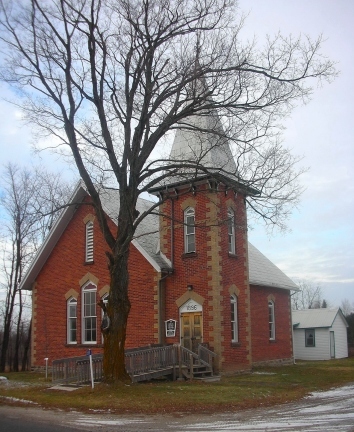
It was Mother’s own choice, to give up her favourite food, for the forty days of Lent each year. It was her way of giving up something that she loved; her small sacrifice. It was her way of showing a little spiritual discipline, leading up to one of our most special holidays of the year.
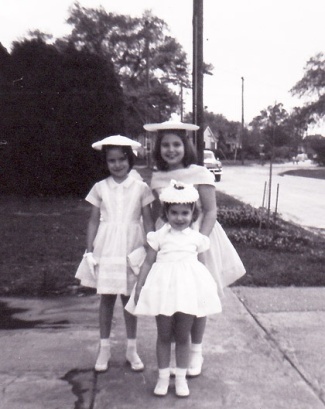
To me, it was one of the signs that spring was on its way, after the long, harsh, winter in Lanark County. Soon the snow would turn to rain, and wash away all of the signs of the dark, dreary, months behind us. The days would stretch out a bit longer, as the mercury rose a little higher in the old thermometer, outside our kitchen window. Soon Easter would be here, and we’d be dressed in our finest hats, and little white gloves, at Calvin Church, and yes, Mother would be eating her beloved ice cream once again.
…………………………………………………..
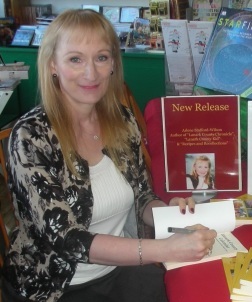
Arlene Stafford-Wilson
(excerpt from “Lanark County Calendar: Four Seasons on the Third Line”)
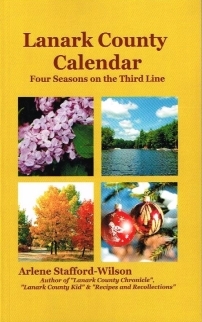
Pancake Tuesday

Confusing Easter Holidays
I always found the church holidays leading up to Easter a bit confusing. There was Shrove (Pancake) Tuesday, then there was Ash Wednesday, Lent, Palm Sunday, Good Friday, and Easter Sunday. To make it even more complicated some of my friends also celebrated Holy Thursday, so they had an extra day to remember.
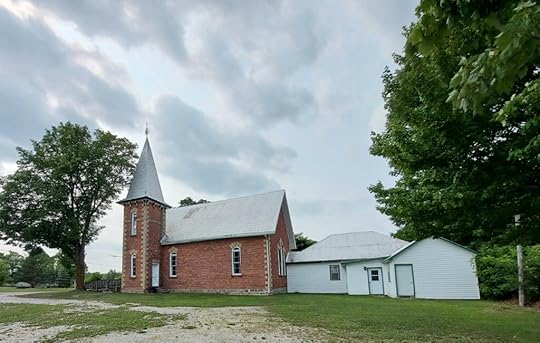
Calvin United Church, built in 1896, and Cameron Hall – built in 1947, Bathurst Township, Lanark County
Mrs. Dixon and Mrs. Miller
tried their best…
Our Sunday School teachers at Calvin United Church, in Bathurst Township, did their best to explain all of the spring holidays. In the primary grades, Mrs. Frances Dixon used a Farmer’s Almanac calendar laid out on one of the wooden tables in our Sunday School class, in Cameron Hall, the building attached to the church. She went through all of special holidays, and explained the importance of each one. Eventually, I grasped the concept of Good Friday and Easter Sunday, but the rest remained a mystery in my young mind.

As we moved ahead in years, Mrs. Betty Miller was our next Sunday School teacher. By this time, I had figured out what Lent was. Lent was the 40 days before Easter when our mother gave up eating ice cream. We were each supposed to give up something, and I always chose broccoli. The other holidays were still confusing.
Pancake Supper
Sometimes the ladies’ auxiliary, the Calvinettes, organized a Pancake Supper for Shrove Tuesday. It wasn’t always easy to plan a time on a weeknight that suited everyone, especially the local farmers who had to do their milking and their chores at specific times during the evening.
One year, Mother was busy in the old kitchen, preparing a batch of her famous Sourdough Pancakes. She would bring the dry ingredients already mixed, and add the wet ingredients once we were at the church hall. Sourdough was her ‘secret’ addition to the recipe that gave the pancakes a distinctive rich flavour. She kept a jar of this strange concoction on a shelf in the pantry and it bubbled, climbed up the sides of the jar, and even shrank and grew in size without warning. Sourdough was strange indeed!
Running short on flour, Mother sent me to our local general store, Cavanagh’s, where I ran into another one of the ladies from the church and told her we were preparing the pancakes.

Cavanagh’s general store, DeWitt’s Corners, Bathurst Township, Lanark County
She said that when she was growing up, Shrove (Pancake) Tuesday was called Fat Tuesday, and was the last big feast before Lent began. I lingered at the store for a few minutes longer to chat with Mrs. Cavanagh, then headed back home with the flour.

Audry (Rutherford) Stafford, at the Stafford House, 3rd line of Bathurst, Lanark County
When I got back home I told Mother that Shrove Tuesday was also called Fat Tuesday, and she remarked that it was also known as Mardis Gras, and Pancake Day, depending on where you’re from. She said it was the last day to enjoy rich food before Lent began, and it was also a day to use up any sugar, eggs, milk, and flour before the time of plainer foods. The ingredients represent the four pillars of the Christian faith – eggs for creation, flour as the mainstay of the human diet, salt for wholesomeness, and milk for purity. She also said that ‘shrove’ was the past tense of the word ‘shrive’ which means to present one’s self for penance and absolution.
Well, at this point I had a bit of an understanding of four of the spring holidays: Shrove Tuesday, Lent, Good Friday, and Easter. The others would have to wait, and I’d learn about them all in good time.
Who were the Calvinettes?
The Calvinettes, the ladies’ auxiliary at Calvin United Church, hosted many Pancake Suppers at Cameron Hall. Some of the members throughout the years: Maxine Jordan, Jean Jordan, Wilma Munro, Agnes Stiller, Doris Popplewell, Carmel Jordan, Frances Dixon, Betty Miller, Marion Majaury, Barbara Jordan, Marilyn Jordan, Ona Closs, Eleanor Conboy, Margery Conboy, Merle Korry, Betty Johnston, Audrey Jordan, Laura Milne, Kathy Patton, Wilma (Scott) Peckett, and Audry Stafford.
…Here’s the recipe for Mother’s famous Sourdough, and have a Happy Pancake Tuesday!
Sourdough Starter
2 c. all purpose flour
2 Tbsp sugar
1 tsp salt
2 c warm water
Mix in a non-metallic bowl, cover with a tea towel and let stand at room temperature for two days. This becomes a spongy, bubbly mass and develops a yeasty aroma. Pour into a glass jar. Feed the sour dough at least once a week to keep it active with 1 c flour, 1 c milk and for sweet recipes add 1/4 c sugar. Add to dough and stir well. Wait 24 hours before using after a feed. Cover and refrigerate if desired.
Sourdough Pancakes
1 c sourdough
3/4 tsp baking soda
1/2 c vegetable oil
1/2 tsp salt
1 egg
1 c flour
1/2 to 1 c milk
Mix well into a thin batter. Ladle into a hot buttered pan. Flip over when bubbling. Serve with butter and maple syrup.
For more of Audry Stafford’s prize-winning recipes:
“Recipes and Recollections: Treats and Tales from Our Mother’s Kitchen

Available at the Book Nook in Perth, Spark Books & Curios in Perth, and Mill Street Books, Almonte, Ontario

Arlene Stafford-Wilson
For other stories set in Lanark County:
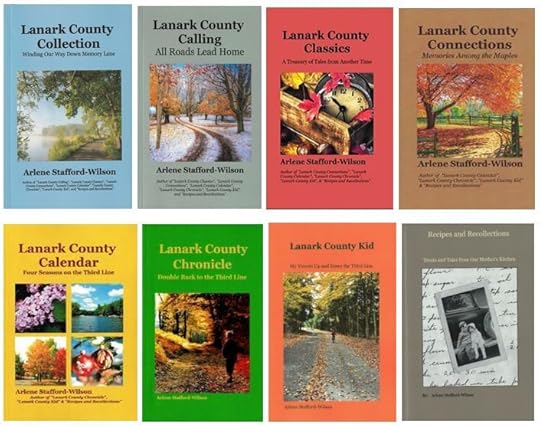
February 24, 2022
Maple Syrup: 10 Things You May Not Know
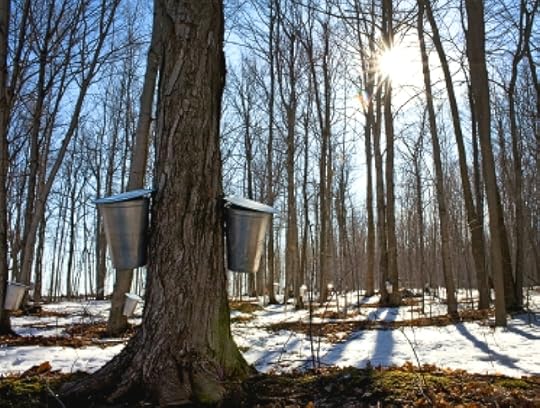
1. It is not a coincidence that Canada has a maple leaf on the nation’s flag. Canadians produce 85% of the world’s maple syrup.

2. The highest quality maple syrup is found in Lanark County, also known as the “Maple Syrup Capital of Ontario”. Lanark County is located in Eastern Ontario, Canada between the cities of Kingston and Ottawa. The historic town of Perth is the county seat, and hosts an annual maple festival each year featuring award-winning maple vendors.

3. Maple syrup is naturally ‘Organic’, because it is produced from natural trees in a wild environment.
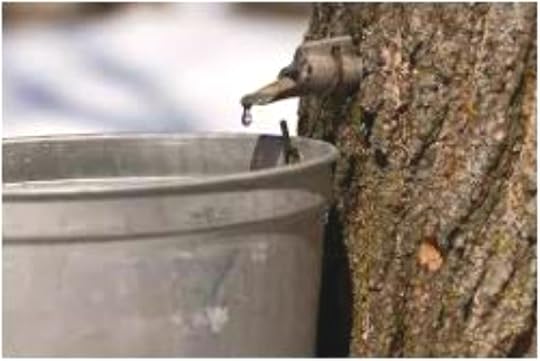
4. Maple syrup has tremendous health benefits. This natural sweetener contains over 54 antioxidants that may help delay or prevent diseases caused by free radicals such as cancer or diabetes. Pure maple syrup has the same beneficial antioxidants found in berries, tomatoes, green tea, red wine and flax seeds.
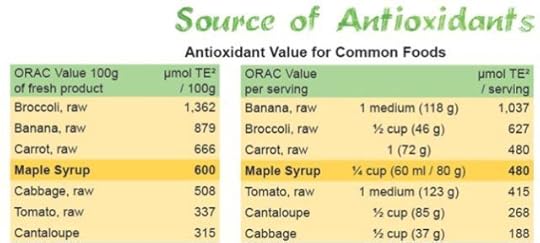
5. A tablespoon of maple syrup has only 40 calories, versus honey with 64 or corn syrup with 60. Maple syrup contains more calcium than milk and more potassium than bananas.

6. Long before the Europeans arrived in North America, natives were collecting sap from maple trees, heating it in hollow logs until it was syrupy, and called it ‘sweet water’.

7. The sap which runs from the ‘tapped’ maple tree is 97 percent water, and forty gallons are evaporated to make one gallon of syrup.
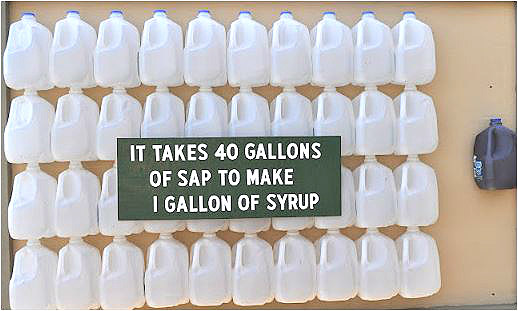
8. A maple tree is normally 30 years old and 10 inches in diameter before it is tapped. As the tree increases in diameter a maximum of four taps can be put into the tree. The tree is not damaged from the tapping process.

9. Maple syrup is graded according to colour and flavour. Lighter syrup is produced earlier in the season when it is colder. As the weather warms up the syrup becomes darker, with a more robust flavour.
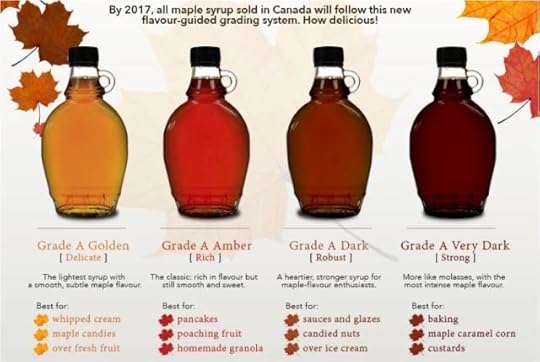
10. Warm spring days with temperatures above freezing, and cold nights below freezing is ideal weather for maple syrup production. The season varies, but normally lasts four to eight weeks depending on the weather.

………
Discover some of the finest maple syrup in the world at the yearly maple festival held in Perth, Ontario – in the heart of Lanark County.

Perth Festival of the Maples
…….
For details on the nutritional benefits of pure maple syrup: Powerful Antioxidants in Maple Syrup
…….
Easy, mouth-watering recipes for Maple Butter and Maple Fudge at the conclusion of this article.
Contact information listing vendors known for their premium quality maple syrup; many are award winners:Fulton’s Pancake House and Sugar Bush
Address: 291 6th Conc Rd., Pakenham, On
Phone: 613-256-3867 Email: info@fultons.ca Website: http://www.fultons.ca
McFarlane’s Maple Syrup
Grant & Gail McFarlane
1550 Prestonvale Rd
Lanark, ON K0G 1K0
Phone – 613-259-5410
Email – grantandgail@storm.ca
Paul’s Maple Products
Brien Paul
267 Sugar Bush Way,
Lanark, ON K0G 1K0
Phone – 613-259-5276
Email – dpaul@storm.ca
Coutts Country Flavours
Address: 1230 Port Elmsley Rd. RR5 Perth, Ontario K7H 3C7
Phone: 613-267-0277 Email: couttscountryflavours@live.ca
Website: couttscountryflavours.ca/
Jameswood Maple
3231 Wolf Grove Road
Dwight James
249 Purdy Rd,
Lanark, ON K0G 1K0
Phone – 613-256-4466
Email – jameswood@storm.ca
Temple’s Sugar Camp
Address: 1700 Ferguson’s Falls Rd. (CR#15) Lanark, On
Phone: 613-253-7000 Email: TemplesInfo@xplornet.com
Website: http://www.templessugarbush.ca/
Dorian Heights Maple Products
3631 Watsons Corners Rd,
RR 1 McDonalds Corners, ON K0G 1M0
Phone – 613-278-2177
Email – dorian75@live.ca
Springdale Farm
Don & Marion Dodds
Home – 1790 Galbraith Rd, RR 2
Clayton, ON K0A 1P0
Sugar Shack – 1699 Galbraith Rd.
Clayton, ON K0A 1P0
Phone – 613-256-4045
Email – info@springdale@.ca
Web site – http://www.springdalemaple.ca
Fairbairn Farm
1827 Wolf Grove Rd,
Almonte, ON K0A 1A0
Phone – 613-256-5047
Email – dfairbairn@hughes.net
Web site – http://www.fairbairnmaple.com
Wheeler’s Pancake House & Sugar Camp
Address: 1001 Highland Line Lanark Highlands (McDonalds Corners), On
Phone: 613-278-2090 Email:webinfo@wheelersmaple.com Website: http://www.wheelersmaple.com
(Wheelers Pancake House and Maple Sugar Camp, has also gained worldwide recognition for achieving the Guinness World Record for “largest collection of maple syrup production artefacts.” In 2000, the collection opened to the public at Wheelers Maple Heritage Museum, and on Jan. 17 the collection of 5,228 items earned the Guinness World Record. The artefacts include 1,325 maple sap spouts, 507 maple sugar molds, 694 maple syrup serving jugs, 100 Native sugaring artefacts, 37 syrup dippers and 263 sap buckets.”
Ennis Maple Products Ltd
848 Ennis Rd,
Balderson, ON K0G 1A0
Phone – 613-267-3491
Email – ennismaple@yahoo.com
Web site – http://www.ennismaple.com
Ryan & Glenn Stead
5692 Hwy 511,
Lanark, ON K0G 1K0
Phone – 613-259-2578
Email – steadmaplesyrup@gmail.com
Sugar Maple Farms Ltd.
David & Paul Chant
3187 Thousand Acre Rd,
RR 2 Portland, ON K0G 1V0
Phone – 613-272-2616
Leggett’s Sugarbush 637B Crosby Rd, RR 1
Crobsy, ON K0G 1E0
Telephone: 613-499-3142 Just off highway 15 at Crosby, 30 minutes South of Smiths Falls- Two times World Champion Maple Syrup Producer, winning all three classes in Maple Syrup for the first time in Royal Winter Fairs’ history. Seventh generation of sugar makers operating in heritage sugarhouse built in 1892.
President’s Awards to Bryan Exley, Don Dodds and the Chant Family
……….
Jeremy Adams – Maple Products and Firewood Sales, McDonald’s Corners 613-278-0082
……….
Oliver’s Mapleworks! Located at 158 Lakewood Lane, Perth, Ontario K7H 3C7. http://www.oliversmapleworks.Com
Email: tree.mapleworks@gmail.com
Phone: 613-264-8612.
Grand Champion Winner 2016 at Perth Festival of the Maples
……..
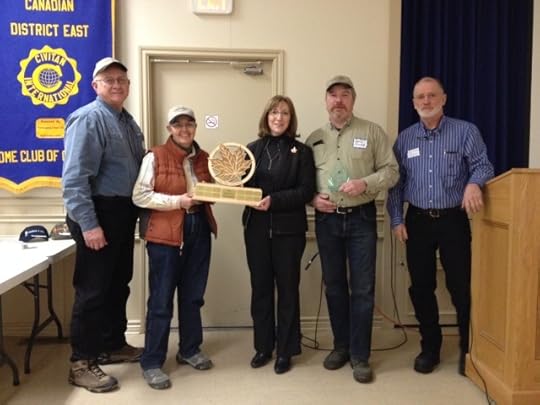
….
2017 Award Winners
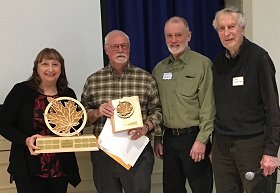
(presented by Dwight James and Ray Fortune)
………………………………………………………………………………………………………………
Lanark & District Maple Syrup Producers Association2018 Sugar Maker of the Year Award:Dwight James(presented by Harold Walker, LDMSPA President)
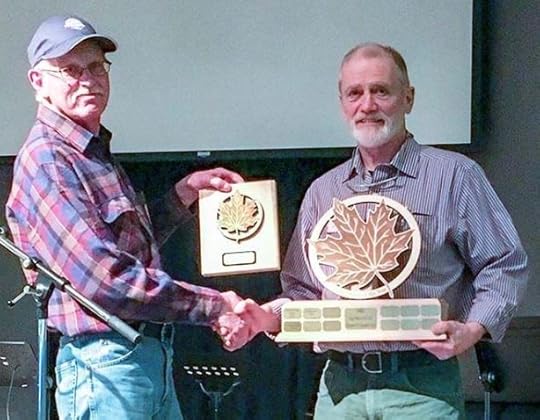
2018 – Dwight James
2017 – George and Linda Horton
2016 – Tressa and David Oliver
2015 – Wheeler Family
2014 – Charlie Temple
2013 – David & Paul Chant
2012 – Ray Thompson
2011 – Bill Gibbons
2010 – Don and Marion Dodds
2009 – Ray Fortune
2008 – George Ennis
2007 – Marion Paul
…….
Two of our family’s favourite Maple Recipes:Maple Butter

Ingredients:
• 1/2 cup softened butter
• 1/4 cup maple syrup
Preparation Time 5 minutes:
Mix butter and maple syrup with electric mixer until blended. Serve on toast, cracker or warm muffins. This is so tasty, and could not be easier to make. Use this creamy maple butter spread on bread, pancakes, muffins, toast, and biscuits.
Yield: about 3/4 cup
……………………………………………………………………………………………………………………………………..
Maple Cream Fudge
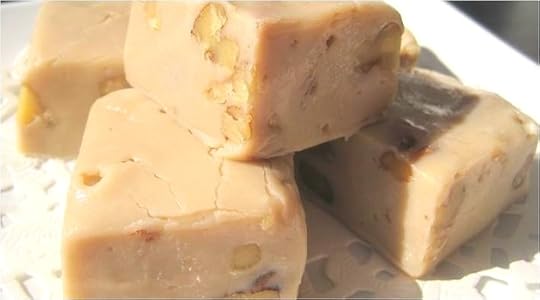
1 cup white sugar
1 cup brown sugar
1 cup cream (I use Heavy cream/whipping cream)
1/3 cup of butter
1/4 cup of maple syrup
pinch of salt
vanilla
Add the two sugars, butter and cream, maple syrup, and salt into a sauce pan. Place over medium heat. Stir while bringing to a boil. Lower the heat and continue to stir slowly while the mixture cooks. After about 7 minutes, test by pouring a small amount into some cold water. You want it to form a soft ball. You might need to cook it for another minute or two. Remove from the heat, add a couple of teaspoons of vanilla and start stirring. It takes about 14 or 15 minutes for the fudge to cool and thicken. Pour into buttered dish. TIP: If you let the fudge sit for 10 minutes after removing from the heat and allow it to cool slightly this will reduce the stirring time. Option: Replace the cream and cup of white sugar with one can of Sweetened Condensed Milk and increase the maple syrup to 1 cup
….
Whether you prefer maple fudge, maple taffy, or maple syrup ‘straight-up’, take some advice from this Lanark County ‘kid’, and enjoy the unforgettable tastes of our spring harvest – all year ’round!
…………………………………………………………..
photo credit: maple bush – Jane Southren…………………………………………………………………..
To discover more about the history and local maple producers in Lanark County, “Lanark County Chronicle” features a chapter ‘Taffy on the Tay’, recalling the ‘good old days’ of maple syrup production.

Available at: The Book Nook, 60 Gore St. E., Perth, ON, Spark Books & Curios, 76 Foster St. Perth, ON, and Mill Street Books, Almonte, ON.
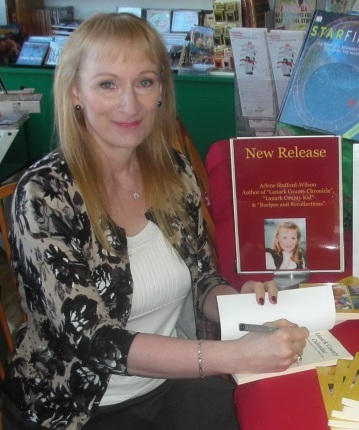
Arlene Stafford-Wilson
February 23, 2022
Maple Trailblazers: Founding Families of Lanark County’s Maple Legacy

Did you know that the very first Festival of the Maples was held in Perth, Ontario back in the 1970s?
The story that follows is dedicated to the Lanark County families who played such a significant role, back in the early days, leading up to this annual festival in Perth: Andrew and George Korry, Bowes family of Glen Tay, Ernie and Evelyn Miller family of Glen Tay, Robert McEwen of Prestonvale, Ken VanAlstine of Maberly, Leonard and Tom Adam of McDonald’s Corners, Brien and Marion Paul west of Hopetown, Lanark, James ‘Carman’ and Edna Gibson of Dalhousie Township, Don and Marion Dodds of Clayton, George Coutts of Rideau Ferry, Wheeler family of McDonald’s Corners, and Fulton family of Pakenham to name a few.
Taffy on the TayYears ago, many of the local farmers produced maple syrup. Some made just enough for their families, and for others it was a supplement to their farm income, at a time of year that was less busy, than during the summer months. There were also a few dealers in the area that sold sugar bush supplies – Max Miller of Snow Road, Percy Drysdale of McDonald’s Corners, and W.J. Ballantyne in Lanark. James Brothers Hardware and the Co-Op in the town of Perth also sold supplies for maple production. Labels for the bottles were often printed by ‘The Perth Courier’.
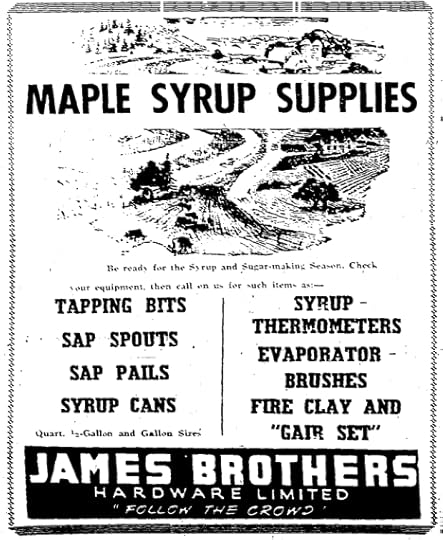
The Korry family farm was located across the road from our farm. They owned a medium sized sugar bush, and produced enough syrup to sell locally. Andrew Korry’s son-in-law John Chaplin sold it through his business – Chaplin’s Dairy, door to door, to their customers on the milk routes. Andrew and his son George were very busy for several weeks each spring making syrup, and my brother Tim Stafford worked with them in the bush one season. Extra help was always welcome. They used a team of horses, with a tank mounted on the sleigh, to draw the sap back to the evaporator, at the sugar shack; typical of many other producers at that time.
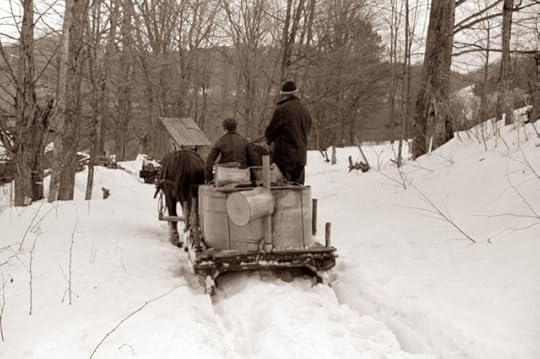
The Bowes and the Miller families of Glen Tay also produced their own syrup. I recall that Art Bowes used to tap quite a number of trees in the mid-sixties. Their land was known as Tayview farm, and it straddled the Tay River -a beautiful setting. At that time they had about 300 acres including hay fields, pastures, and of course maple bushes. Art’s son Doug traveled along with us on our school bus each day in the 1960s, and he often spoke about helping his Dad back in the bush each spring.
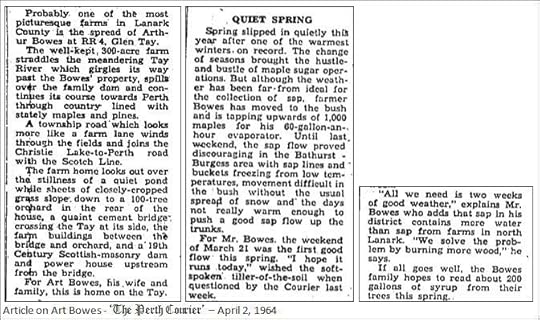

The Miller family’s farm, known as Tayside was owned by Ernest ‘Ernie’ Miller and his wife Evelyn (Mather). The Miller family arrived from Scotland in 1809, and their farm was purchased by Ernie’s great grandfather Dodds in 1858. Their kids were Diane, Nancy, John and Ruth. Evelyn was a lovely, soft-spoken lady, and she was my first 4H club leader. I also recall that Ernie was tapping about 1,500 trees back in the sixties, and had about 30 acres of maple woods. Ernie was a forward thinker, and one of his ideas at that time was that sap should be gathered by trucks from each farm, and taken to a large central evaporator – similar to the way that milk was trucked to cheese factories. It seemed through the years that Ernie was into everything. When he wasn’t farming he wrote history books, he researched genealogy, he worked with young people, and it was no surprise to me when he was inducted into the Ontario Agricultural Hall of Fame in 2003.

The McEwen clan in Ferguson Falls was another family who made their mark in the maple syrup business back in the 60s. In 1966 Robert McEwen of Prestonvale opened up the first pancake house in the area. Originally, Robert made his syrup the old fashioned way, out in the bush, and boiled a cauldron of sap over the fire. Later, in the 1970s I remember that he was one of the first to use plastic pipelines to bring the sap from the trees to one main location. Our Dad knew the McEwen family well, having grown up in that area, and said that Robert often spoke of the difficulties involved in syrup production. It was difficult to find reliable labour, and also challenging was finding the capital to purchase new equipment. Robert was very active in the local industry, and at one time was the President of the Lanark and District Maple Syrup Association.
When the former McEwen Sugar Shack went up for sale, Charles Temple and his wife Susan Snyder bought the property – the very first day it was on the market. The property known now as Temple’s Sugar Bush consists of 70 acres of maple bush where 5,000 trees are tapped annually.

…..
Ken VanAlstine in Maberly tapped over 2,000 trees when I was a kid, and he was among the first to use pipelines. He experimented at first, and tapped just 200 trees using the pipeline system, but the rest was collected in buckets, the traditional way, and transported to the evaporator by horse and sleigh.
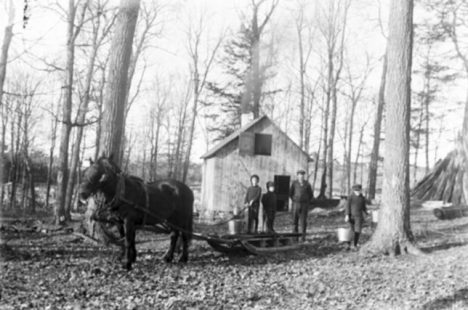
Ken, like other producers in the area, found the cost of hiring labour prohibitive, and found that distributors wanted too much money per gallon. Ken was well known in the area for his excellent quality maple syrup, and said on his best day at that time he gathered 3,300 gallons of sap.

…..
The Ennis family also has a long history of maple production. Their ancestor Arthur Ennis came from County Cavan, Ireland to Lanark County in 1840, and the family has been producing maple syrup for almost a century. Their sugar bush is located on the eastern shores of Bennett Lake, at the end of Ennis Road, Balderson, in Lanark County. Five generations of the Ennis family have been tapping trees on this property.

Another local family of long-time maple producers is the Adam family of McDonald’s Corners. Leonard Adam and his brother Tom tapped an average of 2,250 trees, and owned about 500 acres of land between them. They were hard workers, and spent many days sawing, chopping, and stacking the 20 cords of wood required for their evaporator. The Adam family were one of the first to use a brand new style of evaporator which was 4 by 14 feet. They produced enough to sell locally, and the remainder was shipped out West.
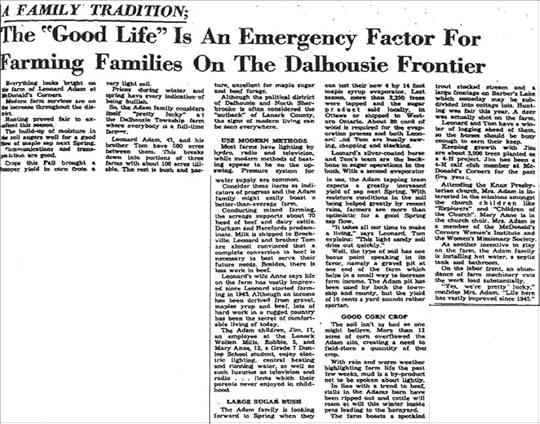
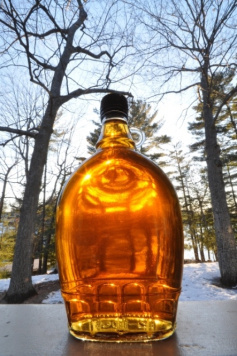
Brien and Marion (McLaren) Paul of R.R #3 Lanark owned a 575 acre farm, about three miles west of Hopetown, and began maple production in 1953. Marion was raised on a farm near the village of Lanark, was known locally as the ‘First Lady of Maple’, and served proudly as a Maple Judge at the Royal Winter Fair in Toronto. Their kids Kathy, Wayne and Darrell were also very involved in maple production, and provided additional labour for the family business. In 1972 Kathy was crowned Maple Queen in the local competition.
Back in the 1960s the Paul family used two sleighs, one pulled by a tractor, and the other by a team of horses. Brien’s father Raymond Paul often tended the evaporator, keeping a watchful eye as the sweet, fragrant, steam boiled off into the air. Russell Foster and Raymond Watt often assisted the Paul family with their production. They tapped an average of 4,000 trees at that time, produced about 700 gallons of syrup, and used approximately 30 cords of wood during the season.

The Paul’s were pioneers in the maple industry, and were very modern in their approach. They were one of the first to install plastic tubing, and an oil fired evaporator. The plastic pipes were attached to the tree spiles, and the sap flowed through the pipes, and emptied into a storage reservoir located behind the evaporator. Brien and Marion were inducted into the International Maple Hall of Fame, and were proud members of the Ontario Maple Producers and the Lanark and District Maple Producers Association.
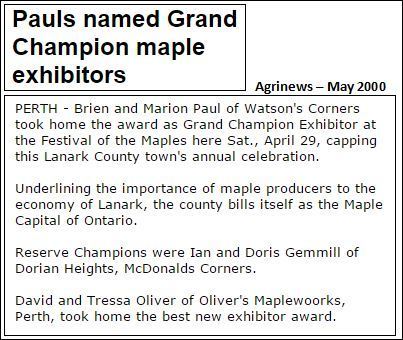
…..
Gibson was a name known for their excellent syrup. James ‘Carman’ Gibson, and his wife Edna (Rodger) had a maple business in Dalhousie Twp at R.R. # 4, Lanark. The nearby areas of Hoods and Poland were well known for their fine quality maple syrup. The Gibson family began tapping trees in 1821 with the arrival of James Gibson from Lanark, Scotland. He was the first pioneer settler in the area, and named their new home Lammermoor after the Lammermoor Hills in Scotland. Their five children Verna, Beatrice, Norma, Carol and Earl helped with the operation. The Gibson family also raised beef, dairy on their busy farm, and hauled milk to the Middleville cheese factory.
…..
When locals think of a long running maple operation, the name Dodds comes to mind. They had a substantial sugar bush at R.R. 2 Clayton, in the Lanark Highlands. The Dodds family has owned Springdale Farm for generations, producing maple syrup since 1917, and Don and Marion Dodds, and their sons Bryan and Stephen helped with production through the years. The family has won many awards for being long term maple producers, and Stephen Dodds won the Grand Champion Trophy at Perth Festival of the Maples in 2011. Their long, long, list of awards include trophies for World Champion Maple Syrup, Sugar Maker of the Year, and a memorable meeting with HRH Prince Charles at the Royal Winter Fair.

…..
One of the maple syrup families that I remember fondly was the Coutts family on the Rideau Ferry Road. I’ll never forget how George Coutts invited local kids to visit his sugar shack. He would take the time during the very busy season to patiently explain how the maple syrup was made. Miss Norma Devlin from the North Elmsley School was invited each year to bring her grade one class to visit the Coutts farm. George along with his son Kenneth showed the children how syrup was made and even provided the kids with some maple taffy at the end of the tour.
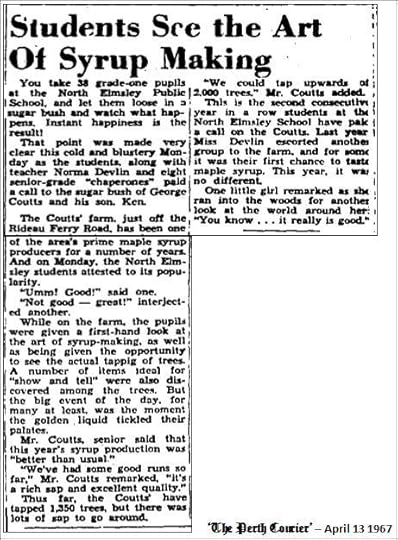
In the 1960s the Coutts family tapped about 1,300 trees yearly, and produced more than enough syrup for both the family and for area sales. Maple syrup was produced in the early 1900’s by Archibald Coutts. In 1920, George Coutts purchased an evaporator, and the production of maple syrup has continued ever since.
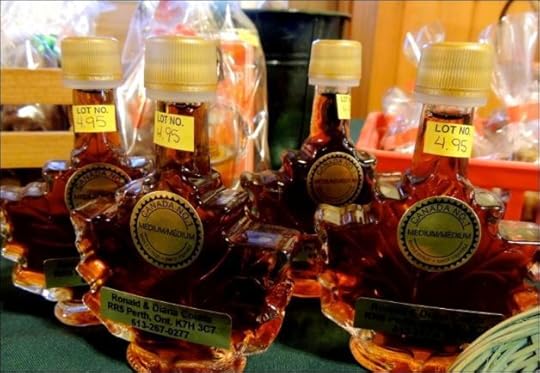
…
The ancestors of the Fulton family began to tap their maple trees back in the 1840s when John Fulton and his brothers came to Lanark County from East Kilbride, Scotland. Their large 370 acre farm is located between Almonte and Pakenham, and they have tapped their huge 4,000 tree sugar bush for many, many, generations. Well known for their high quality syrup they have also operated a pancake house for many years, and their sugar camp has been a popular attraction for both area families and visitors.

…
With these, and other long-time maple producers in Lanark County, it’s not surprising that back in the 1970s, there were lots of conversations, up and down the concessions, of hosting a maple festival in the town of Perth. It was Victor ‘Vic’ Lemieux, owner of Norvic Lodge, at Christie Lake, who first came up with the idea, and presented it to the Perth Chamber of Commerce. Thankfully, Vic was successful in his campaign to launch the first festival, with the hope that it would bring people out to celebrate the spring season, after a long, cold, winter.

On April 19, 1975 the very first Festival of the Maples was held in Perth and it was quite an event!
When my friends and I arrived at the very first Maple Festival that Saturday so long ago, part of Gore Street and Foster Street had been closed to traffic, and many local maple vendors had set up their displays. At 10 a.m. the Festival was officially opened by the Ontario Minister of Industry – Claude Bennett. The Perth Legion ladies, and the ladies from St. Andrew’s Presbyterian Church had displays of delicious home baking for sale, and there were also side-walk sales on Gore Street, and many arts and craft exhibits.
There were a tremendous number of district producers, and many of them offered syrup for sale in different grades, and various sized containers. Pancakes were available for purchase, and free samples of Balderson Cheese were available to anyone who asked, and I recall we went back a couple of times to that booth! One of the most unique displays was a wood-burning evaporator set up on one of the main streets of Perth. I’ve seen a few of those out in the bush, but I never thought I’d see one in town on the main street!
Fiddling and step-dancing competitions were held that day, and I recall Dawson Girdwood saying that some of the best fiddlers from Eastern Ontario were competing in the Open and Junior fiddling classes. The talented Jimmy Heney, one of our neighbours, won the fiddling prize hands down, as he often did, and Karen Grey of Perth was the top step-dancer that night.
The folks in Perth were always enthusiastic supporters of a beauty competition, and so part of the evening program, at the arena that night ,was the crowning of ‘The Sweetest Girl in Lanark County’. Miss Perth 1975 Michelle Hughes crowned the winner – Maple Queen – Susan Thompson, of Perth.
Over the years, we attended the Perth Maple Festival, and each spring it seemed to grow by leaps and bounds. Every year it seemed that there were more vendors selling their maple goods, more artisans displaying their crafts, and an increasing number of booths and displays. We also noticed a steady stream of tourists coming from Ottawa, Kingston, and even as far away as the States to visit our festival.

People in Lanark County, understandably, have always taken their maple syrup very seriously. Because of this, it was devastating to many when January of 1998 brought the most destructive ice storm in Canadian history. From January 4th to 10th Lanark County was severely affected by freezing rain, and ice pellets. Day after day it fell, and accumulated on tree branches, bending their limbs until they snapped off with the weight of the ice. The relentless freezing rain created a thick, heavy coat, damaging both the maple trees and the pipelines in the sugar bushes. Millions of tree branches were caked with the build-up of ice, and became so heavy that they split right off of the trees; severely affecting the sap flow. At the time, there were speculations that it might take forty years for maple production to return to normal.
Through hard work, and good fortune, many of the damaged trees came back, and the maple production resumed within a few years of the ice storm.

Many of us, raised in Lanark County, have participated in making maple syrup at one time or another, and know from experience that it’s extremely labour-intensive. We also have a clear understanding of the enormous amount of sap it takes to make a very small quantity of syrup. No matter how modern the equipment or methods, it still takes forty gallons of sap to make one gallon of syrup.

Now, add in the hours of labour for the tapping, transporting from the tree to the evaporator, the boiling down, the straining, the bottling, and the labeling. Next, factor in the cost of equipment such as the spiles, the pails or tubing, the evaporation tank, fuel, the straining equipment, the bottles, cans, and cost of transporting to market. The price per gallon really doesn’t sound like all that much anymore now, does it?
So, the next time you pass by the maple syrup display in your grocery store aisles, or visit a maple vendor at his farm, or at a festival, please remember how it’s produced.
Pause a moment, to remember the proud, hard-working, pioneer families who settled in Lanark County, and passed down their knowledge through the generations. Think of the enormous quantity of sap required to make a very small container of syrup. Most of all, please stop and consider the origin of your syrup, and take it from this Lanark County kid – you won’t find any better, more flavourful syrup, than from the Maple Syrup Capital of Ontario!
…………..
(an excerpt from “Lanark County Chronicle: Double-Back to the Third Line” Lanark County Chronicle)ISBN 978-0-9877026-2-3…
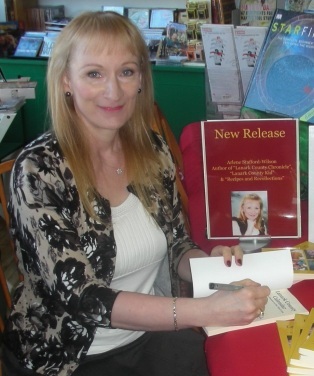
February 18, 2022
Winter Warriors

Eastern Ontario winters are not for the faint of heart. They are bitterly cold. They are relentless…and, they are long. They are not for the casual skier wanting a fashionable romp down a pretty hill only to return to the safety and warmth of their faraway homes. They are not for the frivolous winter vacationer staying at a rustic lodge to photograph a deer or a moose, from the comforts of their cozy cabin windows.
These winter days are for hardy souls only; all others need not apply. These are for people prepared to use a heavy shovel and an ever-present snow brush on a daily basis. These are for people possessing the knowledge and necessary techniques for walking on different types of ice…without falling. Some ice is flat and smooth like a hockey arena. Some ice is snow-covered, just enough to make the hidden surface even more perilous. Some days the ice is black, unseen, undetectable, rendering the walker completely unaware of their vulnerability.

This is where you’ll find the stalwart souls who soldier on, through ice and snow, from October through April each year, month after long winter month. These are the people who listen to reports of schools closing, and distant cities shut down because of the ‘bad’ winter weather, as they trudge through the snow on their way to work because it’s ‘just another day’. These are the people, young and old who wade through snow, stroll on the ice, and drive on slick roads in freezing rain, for months each year. Before their school day or work day has even begun, they have shoveled their sidewalks, brushed off their cars, stepped gingerly on ice, trudged through resistant snow drifts, all of this while bitter cold winds sting any skin unprotected by cumbersome layers of clothing and boots.

These are the enduring rank and file, possessing rare perseverance, stamina and patience. They are dreamers and unflinching optimists. In the final unbending weeks of the coldest season they will study seed catalogues, plan gardens, visit boat shows, and envision themselves under clear, blue skies on calm, warm, July afternoons. They conjure endless images of cottages, muskoka chairs, hammocks, beer and barbecues. They dream of tulips and trilliums, green grass, and sunny days.


As the late winter unwinds its final few weeks in Eastern Ontario, perhaps the most anticipated signal to herald the new season for these enduring folks, will be the time-honoured, and always sublime, first taste of their beloved maple syrup. It spells the defeat, the finish, the finale, the wind-up, and the end-of-the-line for winter. It marks the beginning of spring, of brighter longer days, and the sweet, golden taste of victory for the hardy souls who have survived yet another long, cold Canadian winter.

Arlene Stafford-Wilson
Discover the history of maple syrup production in Lanark County, Eastern Ontario in ‘Taffy on the Tay’, an excerpt from Lanark County Chronicle – ISBN978-0-9877026-23
January 25, 2022
You Might Be Scottish if…..

As January 25th approaches our thoughts turn to all things Scottish as we prepare to celebrate the birthday of Robbie Burns, perhaps one of the most famous poets born and bred in Scotland. Although Robbie died at the tender age of 37, he left a legacy of poetry unmatched, and has become one of Scotland’s most beloved characters.
Today, there are people of Scottish descent scattered all over the world, and though they may be far from the land of their ancestors, they still share the traits passed down from those who came before. Do you have any Scottish blood flowing through your veins?
Here are the top 20 ways to tell if you are Scottish:You might be Scottish if……1. You could swear before you could count.
2. You’ll wait at a store counter for a nickel of change.
3. You still enjoy watching ‘Braveheart’ even though it’s more Hollywood than historical.
4. You prefer to measure things in feet, pounds, and gallons.
5. Your eyes are a lovely shade of blue or green or a light hazel-brown
6. Even though you know what haggis is made with…you still eat it.
7. Your eyes tear up at the sound of bagpipes playing ‘Amazing Grace’.
8. Your speech becomes more colourful after a wee nip or two
9. If someone insults those dear to you, they’ve may have a fight on their hands
10. You’ve got lovely skin, and pleasant facial features
11. You’re a hard worker, and always make sure that every job is done well
12. You’ve likely remained loyal to the same sports team for years, even if they always lose
13. You’re strong willed, with a steely determination.
14. You have a stubborn streak and have been known to hold a grudge
15. You would dive into the street to retrieve a penny during a parade and risk death and injury.
16. You re-use your plastic bags and keep them in a drawer.
17. You’ve got a wonderful sense of humour and enjoy a joke or two
18. You stop talking and listen when bagpipes are playing.
19. You are fiercely loyal to family and friends and extremely proud of your heritage
20. Above all, you possess a strong sense of honour, and always keep your word.
……….
Can you name these famous Scots?(answers at the bottom of the page)






‘Auld Lang Syne’, was written by the iconic Scottish poet Robbie Burns, and on January 25th each year Scots all over the world celebrate the day he was born in 1759. Many Scottish folk attend what is known as ‘Burns Night’ where they will feast on a traditional meal of the infamous ‘haggis’.
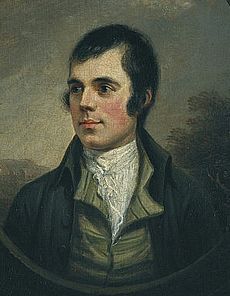
In honour of Robbie Burns here is a traditional Scottish recipe for Haggis:
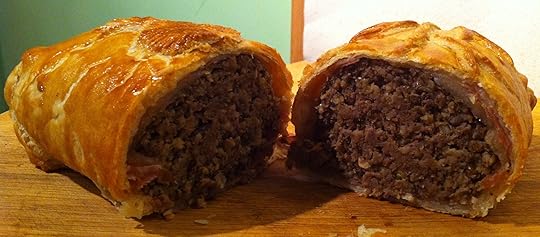
1 set of sheep’s heart, lungs and liver (cleaned by a butcher)
One beef bung (intestine)
3 c finely chopped suet
1 c medium ground oatmeal
2 medium onions, finely chopped
1 c beef stock
1 tsp salt
½ tsp pepper
1 tsp nutmeg
½ tsp mace
Method:
Trim off fat and sinew from the sheep’s intestine and, discard the windpipe.
Place in a large pan, cover with water and bring to a boil
Reduce heat, simmer for 1 hour until tender and cool
Chop the meat into fine pieces and combine in a large bowl with the suet, oatmeal, finely onions, beef stock, salt, pepper, nutmeg and mace
Mix well.
Stuff the meat and spices mixture into the beef ‘bung’ which should be over half full, then press out the air and tie the open ends tightly with string
Leave room to expand or it may burst while cooking
Place in a pot and cover with water, and bring to a boil. Reduce heat and simmer, covered, for 3 hours.
Serve hot with “champit tatties and bashit neeps” (mashed/creamed potato and turnip).
For added flavour, you can add some nutmeg to the potatoes and allspice to the turnip. Some people like to pour a little whisky over their haggis – Drambuie may be used as well.
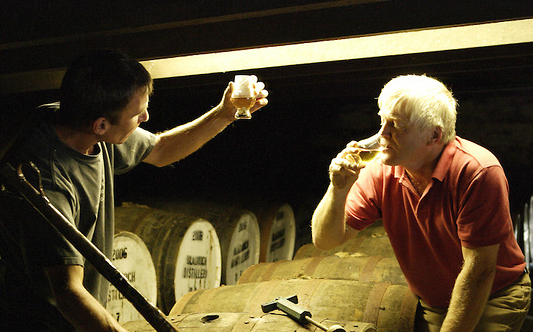
Whether you are planning to attend a ‘Burns Night’ celebration this January 25th, or just having a small gathering at your home, don’t forget to recite the traditional Selkirk Grace before enjoying your haggis along with a wee dram of your favourite Scotch! Happy Robbie Burns Day! Och Aye!
Selkirk Grace
“Some hae meat and canna eat,
and some wad eat that want it,
but we hae meat and we can eat,
and sae the Lord be thankit.”
………
Answers – Scottish Celebrities : 1. Annie Lennox, 2. Sean Connery, 3. Isla Fisher, 4. Ewan McGregor, 5. Sheena Easton, 6. Gerard Butler
………
Did you know that many of the pioneer settlers in Lanark County, Ontario, Canada came from Scotland? For more information on researching your Scottish ancestors who settled in Eastern Ontario:
Lanark County Genealogical Society
………
Scottish Genealogical Society, Edinburgh, Scotland
……….
Scotland – Births & Baptisms 1564-1950
……….
National Library of Scotland – Genealogical Research
……….
………..
(This post is dedicated to the memory of James ‘Jim’ Gebbie, my husband Kevin’s uncle, who passed away in 2013 in his native Scotland. Jim was a kind soul, and a fine gentleman, and I had the privilege of spending some time with him on his visit to Canada in the summer of 2011. He shared many of his stories with us, of life as a boy growing up in Hamilton, Lanarkshire, Scotland. We hope that wherever Jim is now, they will be serving up his wee glass of scotch that he enjoyed so much before dinner each evening. Rest in peace Jim.)
………
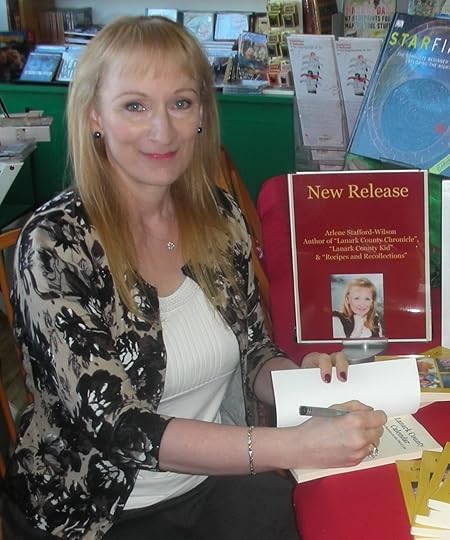
Arlene Stafford-Wilson
January 17, 2022
Perth Library – Heart of the Town
Although there was a reading room established on the main street of Perth in the 1800s, which featured current newspapers, books and periodicals, it wasn’t until the beginning of the twentieth century that a formal library building was constructed.
With the help of a large donation from the Andrew Carnegie Foundation, along with municipal and private funds, a library was built and opened to the public on Dec. 30th,1907.
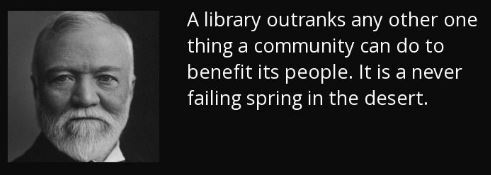



The Perth Library was one of five libraries in Ontario that was built using grants from American philanthropist Andrew Carnegie. Constructed from local rock and brick, the library was an impressive three story building gracing Gore Street near the Tay River canal.
No Smoking Rule – Jan. 1908

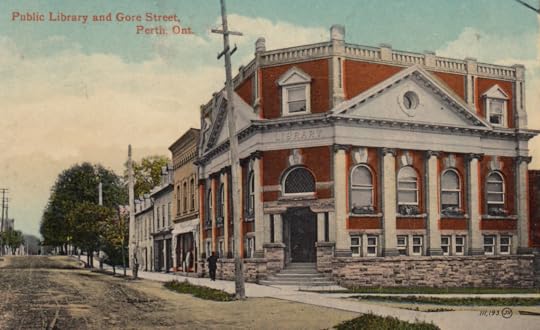
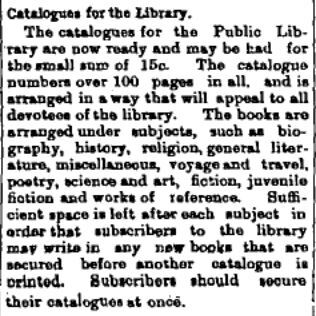





At at 7:15 p.m on Thursday, January 3rd, 1980, flames tore through the building. It was said at the time that the fire likely began in the basement.
“Shaking their heads in disbelief, Perth’s residents, both young and old, gazed yesterday at the gutted remains of their historical public library.”For over four hours a team of about 50 fire-fighters fought in freezing temperatures, and poured thousands of gallons of water into the building, through smashed windows and doorways.
Perth police constable, Bob Carnrite, said, “The cause of the fire is a mystery.”Water soaked books smoldered in the gutted building and nothing could be saved. Over 62,000 books along with paintings, antiques, maps and historical documents were lost.
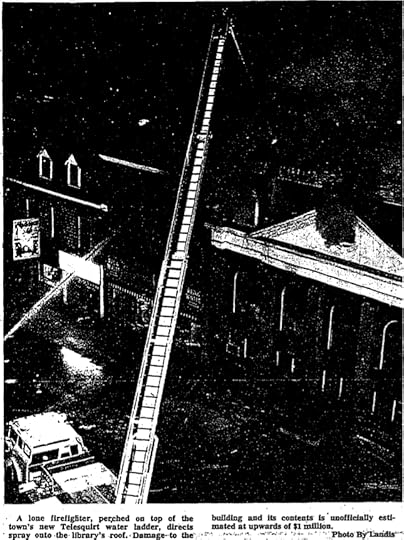
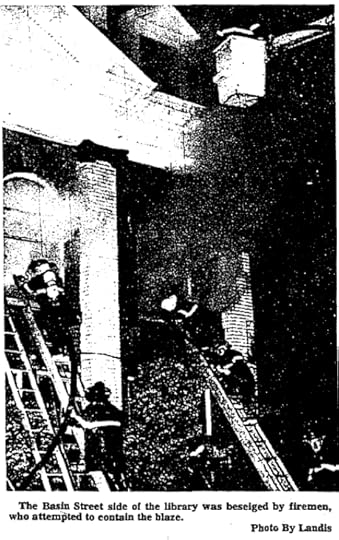
I recall the eerie sight of the building, familiar to so many of us, appeared like an ice castle because of the frigid temperatures, and the tremendous amount of water used to fight the fire.
“Every child is talking about it today.”, said Eve Dodge, Supervisor of the Perth Daycare Center. “Because of all the programs held there and their frequent contact, the library was a very important part of their lives.”It was a devastating loss to the town of Perth having been one of the loveliest buildings on the main street for so many decades.
“For this town, the library was the heart of the community.”It also meant job loss for Assistant Librarians, Susan Mackey, and Fay Cunningham.
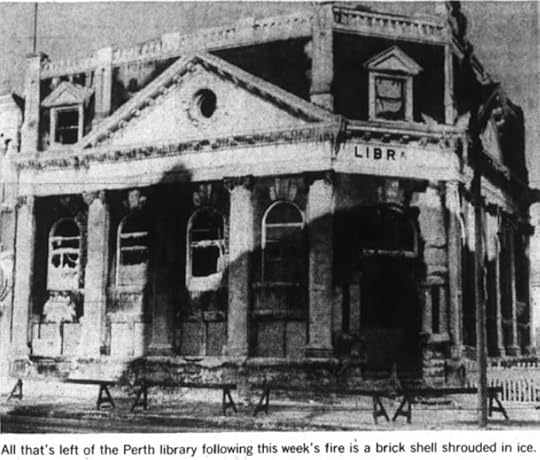
Harold Jordan, Inspector withe the Ontario Fire Marshall’s Office visited the site once the blaze was extinguished, and sifted through the ruins.
“I haven’t formed any conclusions yet”, Jordan said, “I’m considering every possibility. There are some indications the fire may have started in the basement, but I have no information at the moment which points the cause at anything other than accidental. Our minds are still open.”The inspection showed that no fuses in the library had blown, and that the fire had started in the basement.
Secretary Treasurer, Ivey Mather, said, the investigation continues….The Perth Public Library Board immediately began to find a temporary location for a public library.
The Board was offered space above the River Guild, and at St. James’ Hall, and even at the old Bell Telephone building.
“We could be back into circulation by next week.”, said Board Chairman, Bernard Elliot.

Other local libraries donated books and these were housed temporarily in the basement of McMartin House, and plans were quickly put into place to establish a new library.

The present library, on the corner of Herriott and Drummond Streets, was opened on December 16th, 1981.
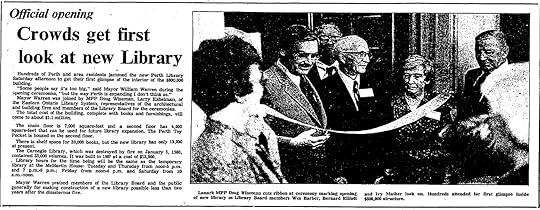
Photo: Lanark MPP Doug Wiseman cuts the ribbon. Library Board Members: Wes Barber, Bernard Elliot, and Ivy Mather.
The new building was constructed, at a total cost of $800,000.
(the original library in 1907 was built for $13,000)

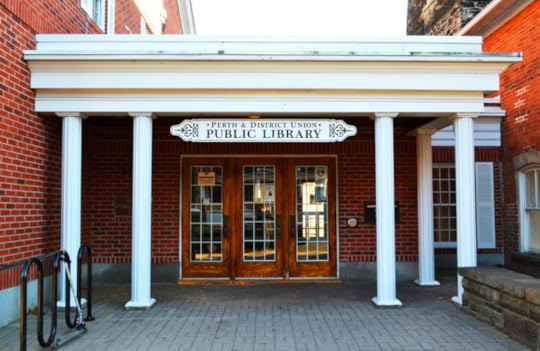
The ‘new’ Perth library is located at 30 Herriott St, Perth, Ontario – a beautiful setting, along the Tay River.
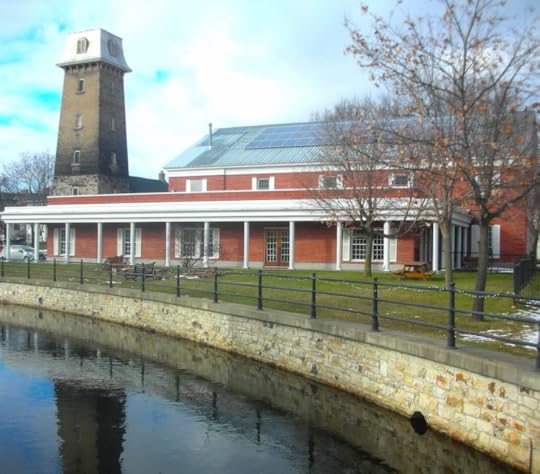

Meet the dedicated staff of the Perth Public Library, who worked there in the 1960s, 1970s, 1980s, and beyond. Discover the tragedy, scandal, and unstoppable spirit that made this place ‘the heart of the town’.
The story, “Perth Library: Heart of the Town”, is one of the stories in –
“Lanark County Collection: Winding Our Way Down Memory Lane”
(available at The Book Nook in Perth, Ontario, Spark Books & Curios Perth, Ontario, and Mill Street Books in Almonte, Ontario)
…………
or online at:

